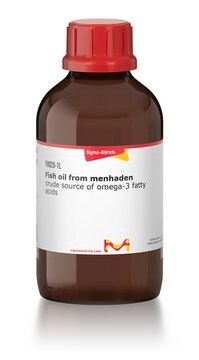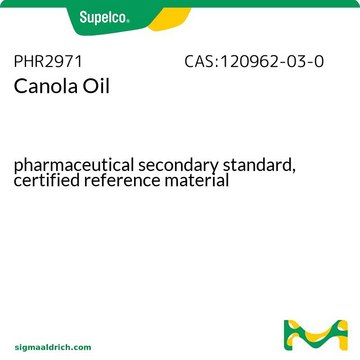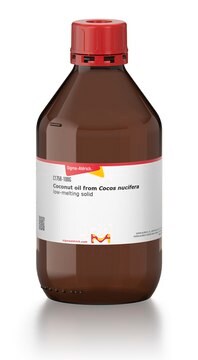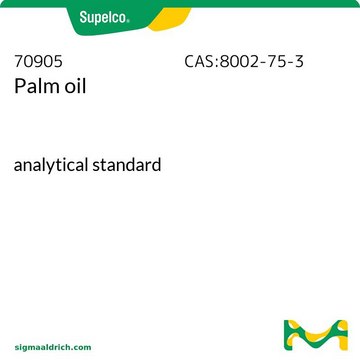Recommended Products
form
liquid
impurities
~0.5% free fatty acids
functional group
oleic acid
lipid type
oils
shipped in
ambient
storage temp.
2-8°C
Looking for similar products? Visit Product Comparison Guide
Related Categories
Biochem/physiol Actions
Lard oil may be used to test the properties of antioxidants such as flavonoids and as a producer of mutagens and oxidants in oil smoke.
Storage Class Code
10 - Combustible liquids
WGK
awg
Flash Point(F)
Not applicable
Flash Point(C)
Not applicable
Personal Protective Equipment
dust mask type N95 (US), Eyeshields, Gloves
Certificates of Analysis (COA)
Search for Certificates of Analysis (COA) by entering the products Lot/Batch Number. Lot and Batch Numbers can be found on a product’s label following the words ‘Lot’ or ‘Batch’.
Already Own This Product?
Find documentation for the products that you have recently purchased in the Document Library.
T A Chiang et al.
Food and chemical toxicology : an international journal published for the British Industrial Biological Research Association, 37(2-3), 125-134 (1999-05-05)
According to toxicological studies, there are several unidentified mutagens derived from cooking oil fumes appearing in kitchens of Chinese homes where women daily prepare food. Data are limited to an analysis of aromatic amines from cooking oil fumes, which are
P F Wu et al.
Mutation research, 403(1-2), 29-34 (1998-09-03)
According to earlier studies, fumes from cooking oils were found to be mutagenic and several polycyclic aromatic hydrocarbons (PAHs), (benzo(a)pyrene (B(a)P), benz(a)antracene (B(a)A), and dibenz(a,h)anthracene (DB(ah)A)) were identified. Fume samples from three different commercial cooking oils frequently used in Taiwan
Li Ping-Chia et al.
Journal of biomedical science, 16, 58-58 (2009-07-07)
Airborne particulate matter, from cooking oil, smoking, engine exhaust and other sources, is associated with the development of atherosclerosis and myocardial infarction. In order to explore the cellular and molecular events following exposure of rats to lard oil smoke, we
Our team of scientists has experience in all areas of research including Life Science, Material Science, Chemical Synthesis, Chromatography, Analytical and many others.
Contact Technical Service








